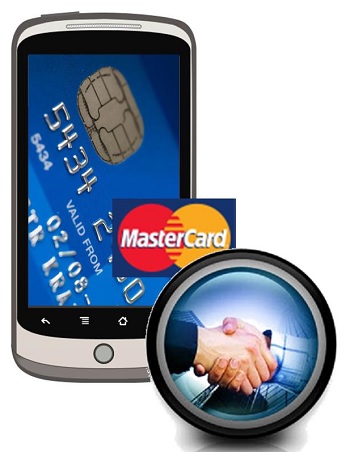Two major players in smartphone transactions have teamed up to boost the market – MasterCard and Weve.
 MasterCard and Weve have now come together in a partnership that is designed to help the mobile payments market to clean itself up, smooth itself out and become considerably more appealing to merchants and consumers alike.
MasterCard and Weve have now come together in a partnership that is designed to help the mobile payments market to clean itself up, smooth itself out and become considerably more appealing to merchants and consumers alike.
The scattered and inconsistent nature of the market is a major factor that is holding back the adoption of the tech.
This new mobile payments partnership is made up of credit card giant, MasterCard, and Weve, which is a joint venture comprising of the three largest mobile operators in the United Kingdom: O2, Vodafone UK, and EE. They will be working together to develop something altogether new and that will hopefully do what the market has failed to be able to provide until now.
They have described their goal of creating the U.K.’s “most comprehensive contactless mobile payments system.”
This is meant to help to create a contactless system for paying for products and services through the use of their smartphones and mobile devices, in a way that will be simple and convenient for consumers to use, while being cheaper to manage for banks. The role that MasterCard has taken on is to provide the system with the integration services and the technology to make it possible for financial institutions such as banks to be able to step into the payment platform from Weve.
Weve’s CEO, David Sear, said that this contactless transaction technology in the form of credit and debit cards has been taking off in the United Kingdom. He explained that there are currently 36 million people in the U.K. who are using this type of card, and that more than 300,000 retailers there are able to process this type of transaction.
Equally, he admits that paying over mobile devices using similar technology is “a bit of a mess”. He stated that it “may sound harsh, but it’s inescapably true; to date, the industry has created a level of discussion and confusion driven by a multitude of announcements that actually haven’t delivered mobile payments systems that works the way that consumers want and need them to.”
A new San Francisco startup is enhancing the way that programming will be experienced by viewers.
A startup called SeeSpace, that is based in San Francisco, is now pursuing a new venture called InAir that would bring television together with web content in a highly unique way that uses augmented reality.
This would provide a virtually seamless and highly informational viewing experience.
This would function by presenting television programming alongside web content related to what was being seen. For example, Through the use of augmented reality, a viewer would be able to enjoy a program that talked about the Mars colony that is being planned for the near future, and could simultaneously access information from the official Mars One human settlement website.
The team behind InAir believes that this augmented reality experience could eliminate the need for second screens.
This method of presenting both kinds of content at the same time could reduce or eliminate the need for a viewer to need to use additional devices such as smartphones, tablets, or laptops in order to obtain information about a show that they are currently viewing. Portable and mobile devices have made this type of multitasking a very popular activity while watching television, and this new technology could help to make it easier and more direct.
SeeSpace is referring to the InAir service as the first augmented television experience because it would be the first one to use the technology in its truest sense. Combining the use of the service with a 3D television would make it possible for the additional content to appear to float in front of the television screen, while the program continues to be displayed as usual. This would give a type of layered experience, where the additional information is shown in front of the regularly playing program.
When combined with Leap Motion, Kinect, or a free Android or iOS app, it would allow the augmented reality content to be manipulated with simple hand gestures from the viewers. Furthermore, InAir will also have a software development kit (SDK) that will give mobile development companies and experts the chance to broaden the capabilities of the service.
 MasterCard and Weve have now come together in a partnership that is designed to help the mobile payments market to clean itself up, smooth itself out and become considerably more appealing to merchants and consumers alike.
MasterCard and Weve have now come together in a partnership that is designed to help the mobile payments market to clean itself up, smooth itself out and become considerably more appealing to merchants and consumers alike.
